The Lincoln Service train route is a route between Chicago and St. Louis, Missouri with nine stops in between. While the route doesn’t reach the southernmost parts of Illinois, it does pretty effectively cut a diagonal across the state from the northeast to the southwest.
Most importantly, the train services two destinations for short trips from Chicago—St. Louis, Missouri, and Springfield, the capital of Illinois, which was our destination for this particular trip.
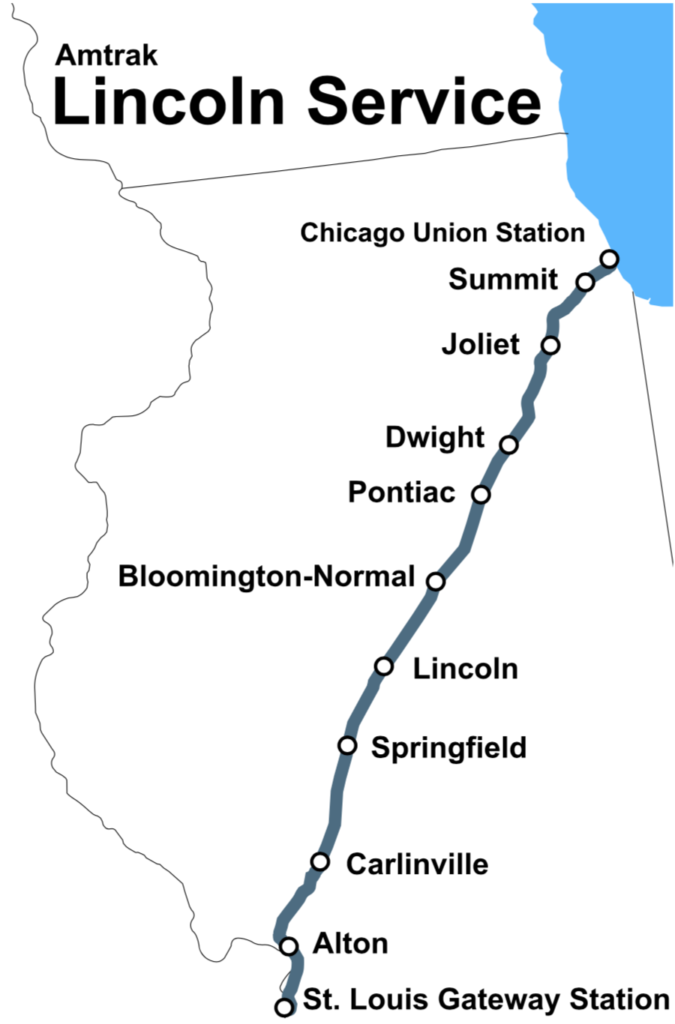
Buying Tickets
The Lincoln Service route is operated by Amtrak, which has a near monopoly on long-distance rail transit in the United States. We always buy Amtrak tickets through Amtrak.com. Amtrak offers discounts to certain groups (e.g. students, veterans, seniors), but we’re not experts on those.

The Amtrak website is intuitive. Once you put in your date(s) and origin/destination, it will give you the train options. Currently, there are four daily Lincoln Service routes from Chicago to St. Louis, departing at 7AM, 9:25AM, 5:15PM, and 7PM.
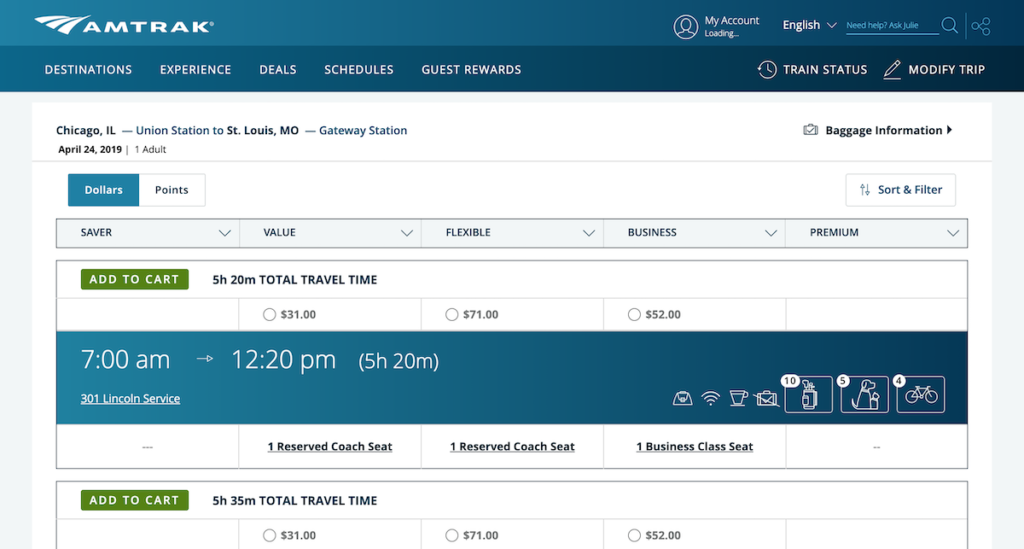
The prices above are typical. We’ll usually book a value fare. Today we’re only headed to Springfield, which typically prices at $24. You can see the amenities offered on the train.
Besides the Lincoln Service, you can take the Texas Eagle between Chicago and St. Louis, but this skips the stops at Summit and Dwight. The Texas Eagle loses wifi (not a huge loss given its low quality), but gains full meal service (which we have yet to try).
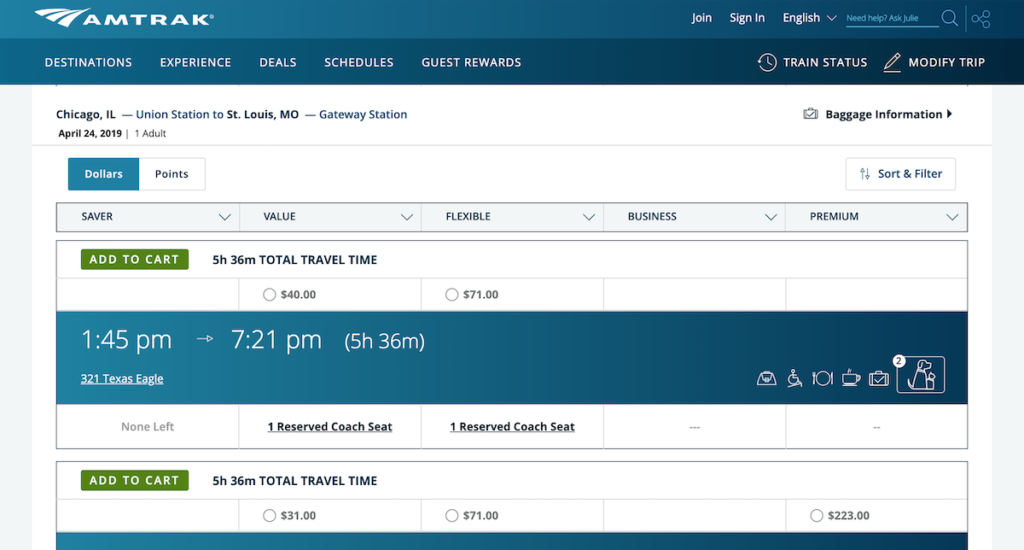
The Texas Eagle uses a complicated numbering structure, so you’ll see results for routes 21, 321, and 421. Between Chicago and St. Louis, these are the same trains.
We settled on the Lincoln Service 305 value fare, which would allow us to nearly keep our regular working hours and to arrive in Springfield early enough for a quick dinner. Amtrak has a relatively generous refund policy where even their cheapest fare class can easily recover 75% of their ticket cost in the form of a voucher.
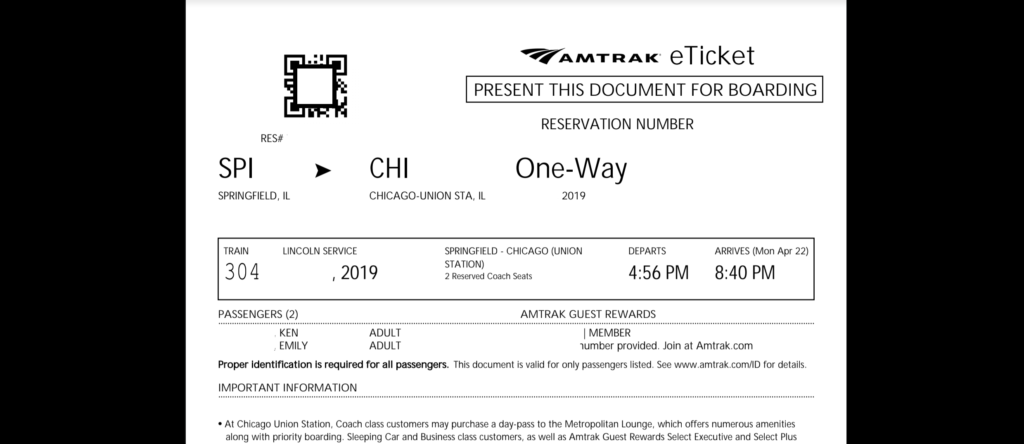
Tickets are sent via email as a PDF attached to your receipt. You don’t have to print it as long as you can display it on your phone.
Getting to Union Station
The Lincoln Service 305 departs from Union Station, the sole Amtrak stop in Chicago. Union Station is served by a variety of Metra train lines, but the L does not stop there.
Where is Chicago’s Union Station Located?
Chicago’s Union Station is located just west of the Chicago River between the streets of Adams, Jackson, and Clinton. The address for Chicago’s Union Station is 225 S Canal St, Chicago, IL 60606.
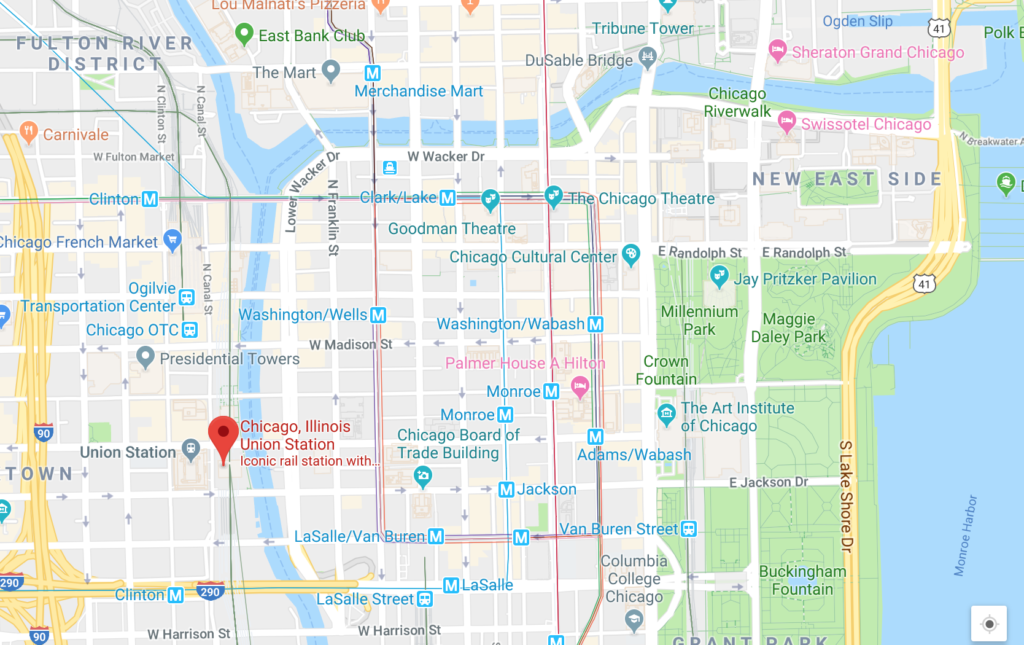
Don’t let maps confuse you. Half of the station’s footprint is underground. Between Canal and the river, there is no above-ground structure. You’ll see an unrelated office building and a few entrances to the underground station:
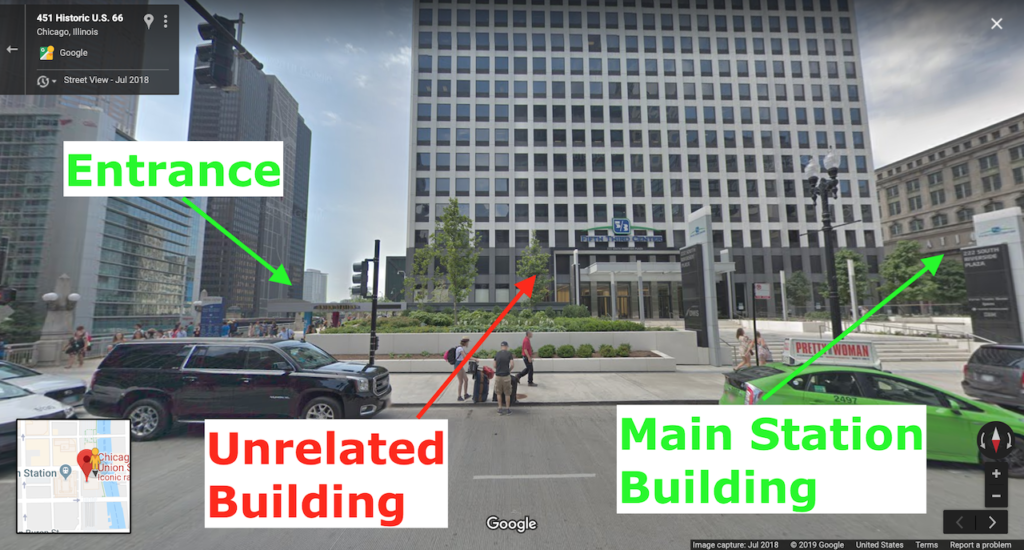
The main station structure between Canal and Clinton is impossible to miss:

How to Get to Union Station via Chicago’s L Train System
There are a few L stops within walking distance, namely Clinton (Blue Line), Quincy (Loop routes), and Jackson (Blue and Red Lines). From within downtown Chicago, it will usually make sense to take the bus. We have a guide to riding Chicago’s L train system.
Taking the Bus to Chicago’s Union Station
There are so many buses making so many stops within walking distance of Union Station that we can’t mention them all. We recommend using Google Maps to get the best route to or from Union Station. Check out our guide to taking the CTA bus system.
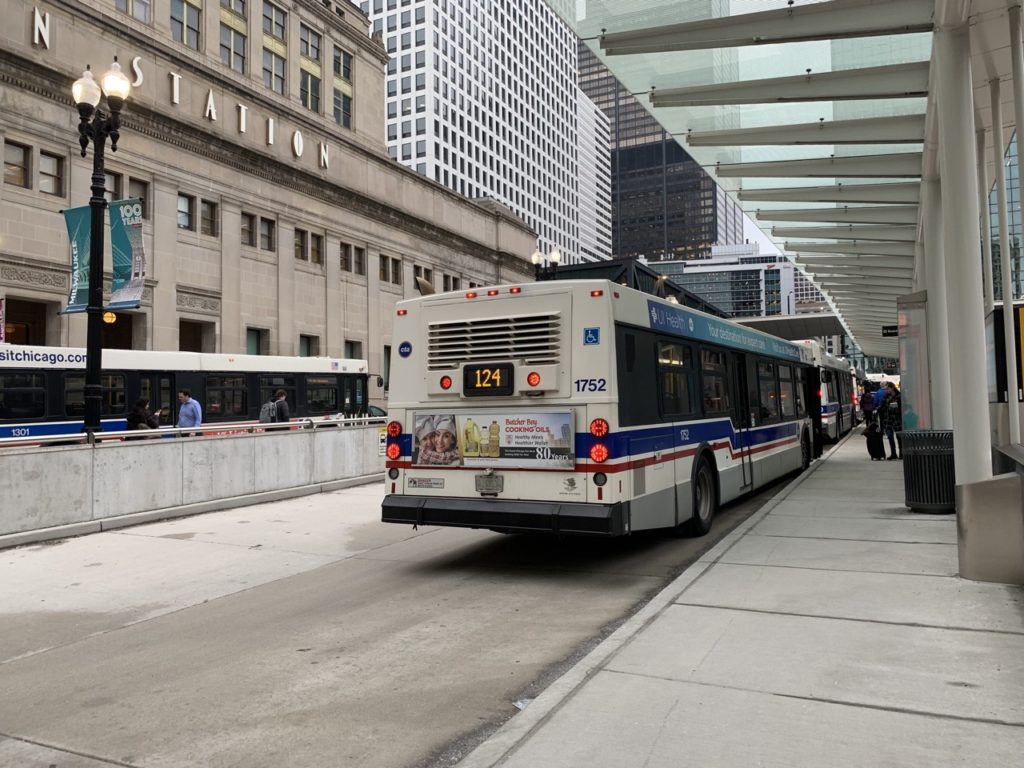
In 2016, a new Union Station Transit Center opened, and a number of buses, including the one we took this day, stop there.
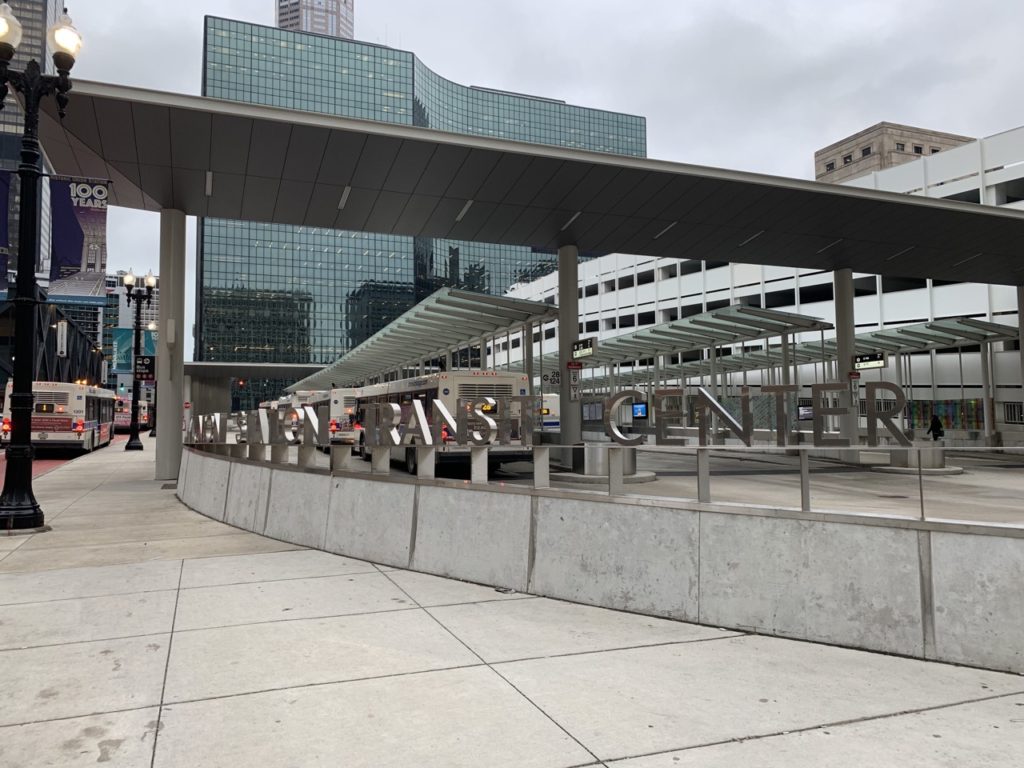
It drops you off right across the street from Union Station. The station is hard to miss…

From the Union Station Transit Center, you can follow the signs toward Union Station…
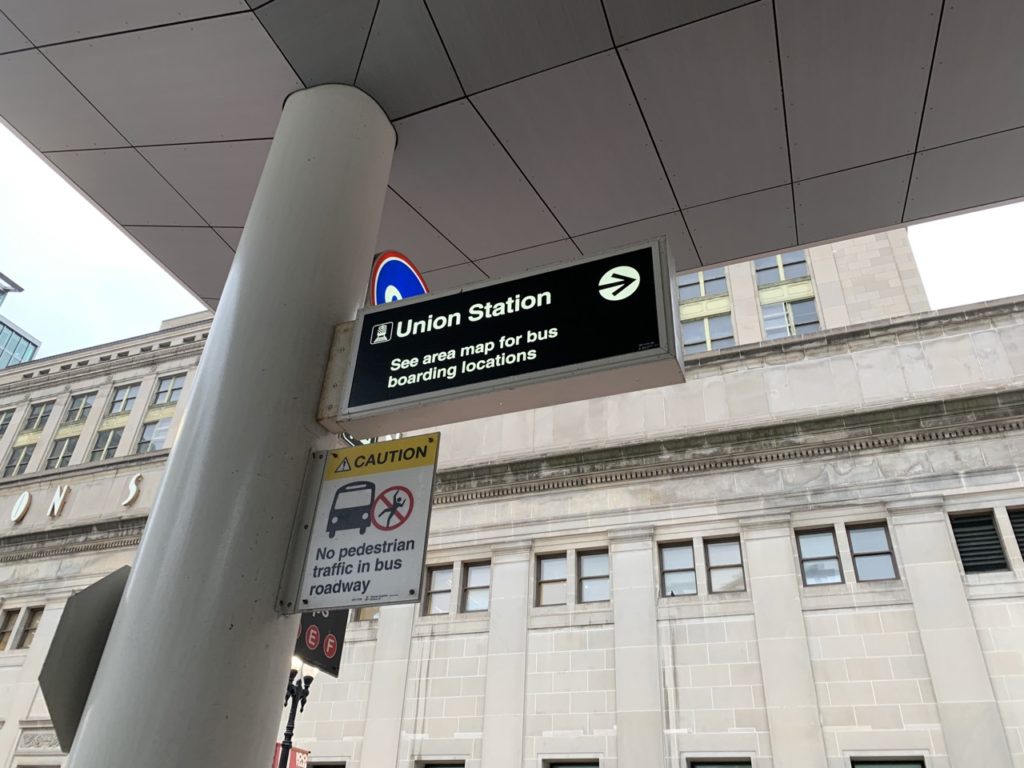
…and you’ll reach an underground passageway to the station itself.
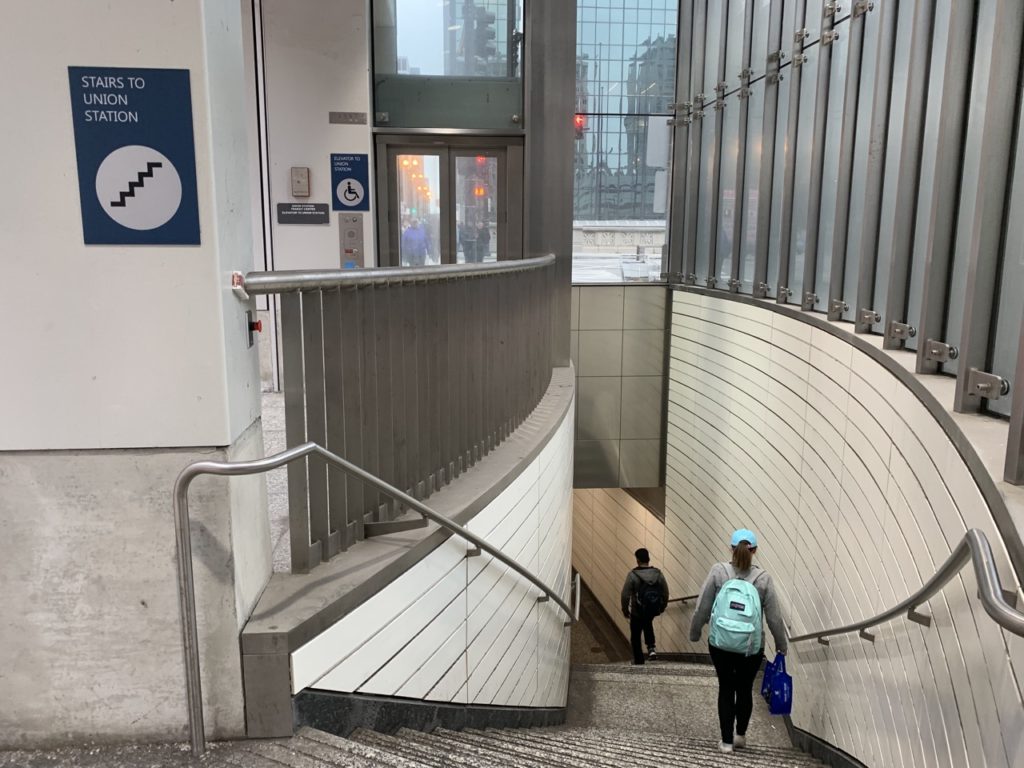
Navigating Chicago’s Union Station
I’ve ridden trains on six continents, and I’m comfortable saying Union Station is one of, if not the, worst train stations I’ve ever been to. We recommend arriving 30 minutes before your scheduled departure. We actually arrived at 4:52PM for our 5:15PM.
Union Station has two levels, a mezzanine level for eating / shopping and a concourse level primarily for actual train services (information, ticketing, boarding). Coming from the Union Station Transit Center, you’re deposited concourse level at the south concourse at the end opposite the Amtrak gates.
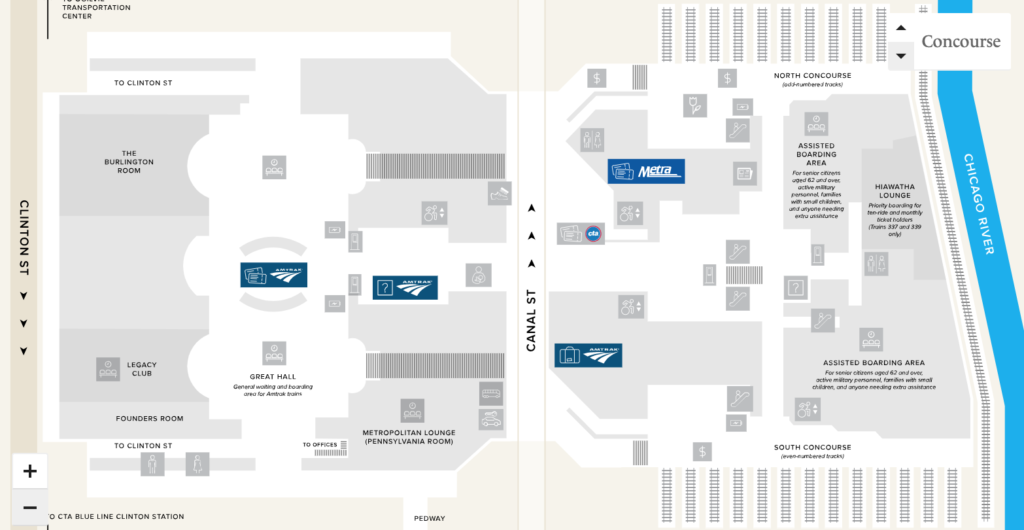
The south concourse has even-numbered tracks and the north concourse has odd-numbered. Certain trains (I think it’s all Amtrak trains) use a combination letter-number system. The number is the actual track, and the letter is the “gate.” Gates A and B serve the north concourse (odd track numbers) and gates C, D, E, and F serve the south concourse (even track numbers).
So, a Metra information board will give you Metra trains and track numbers without gates.
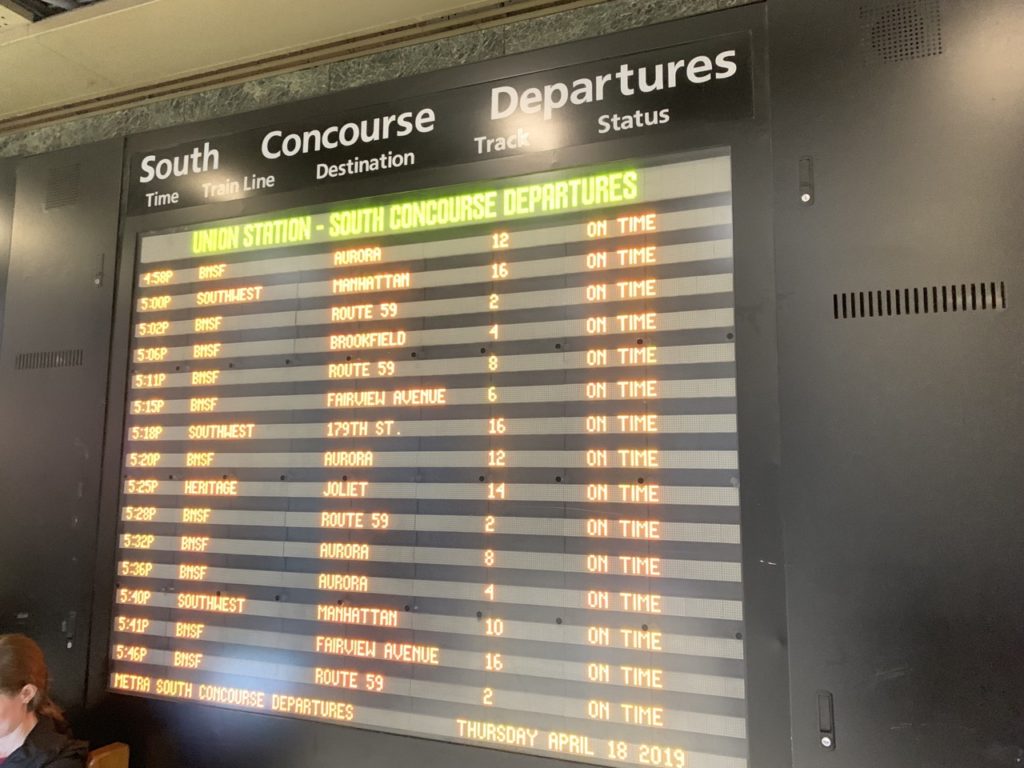
While a separate Amtrak board gives Amtrak gate-track combinations for departures.
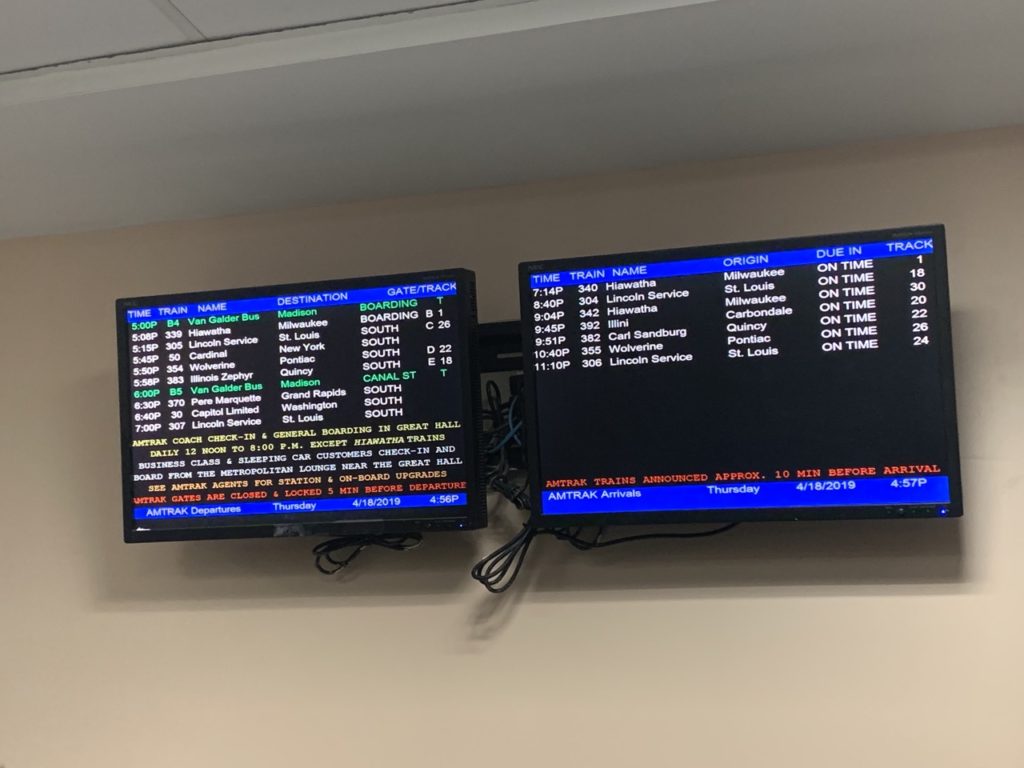
This isn’t intuitive, because why would anyone think “E 18” is right next to “16.” Especially when something like “C 26” also exists. C26 -…- E18 – 16 is not an intuitive way to arrange tracks.
(Just to clarify, this system is designed so that each gate can serve one track at a time and the two boarding lounges serve as waiting areas for people at multiple gates. It’s not the worst concept, it’s just awful in terms of user experience.)
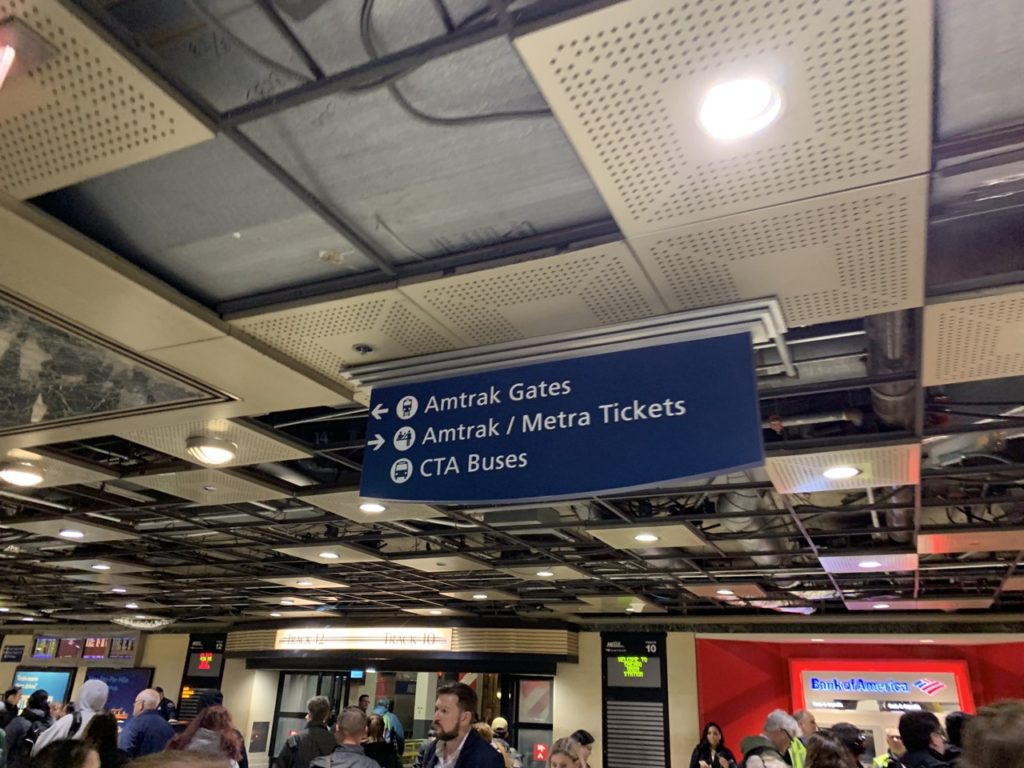
So to get to your Amtrak train–once you’ve identified your gate-track number at an Amtrak board, you’ll want to follow the signs for Amtrak gates, keeping in mind that it’s really your track number that will tell you whether you’re in the correct concourse and heading in the correct direction.
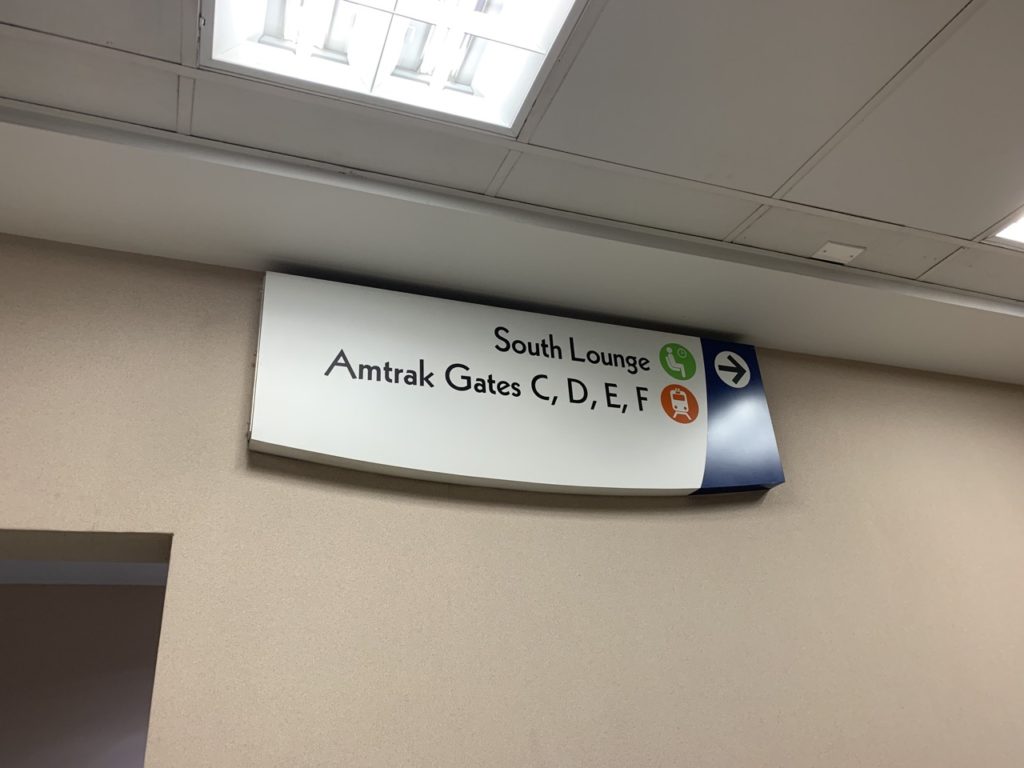
All that said, the staff at Union Station are incredibly helpful. They get that it’s way too busy of a place, and they are more than willing to quickly direct you to your track number.
By the time we arrived at the boarding lounge at 4:55PM, the queue was already formed for our train (and went all the way outside of the Boarding Lounge, which isn’t uncommon). I snapped some pictures of the lounge as we passed through it.
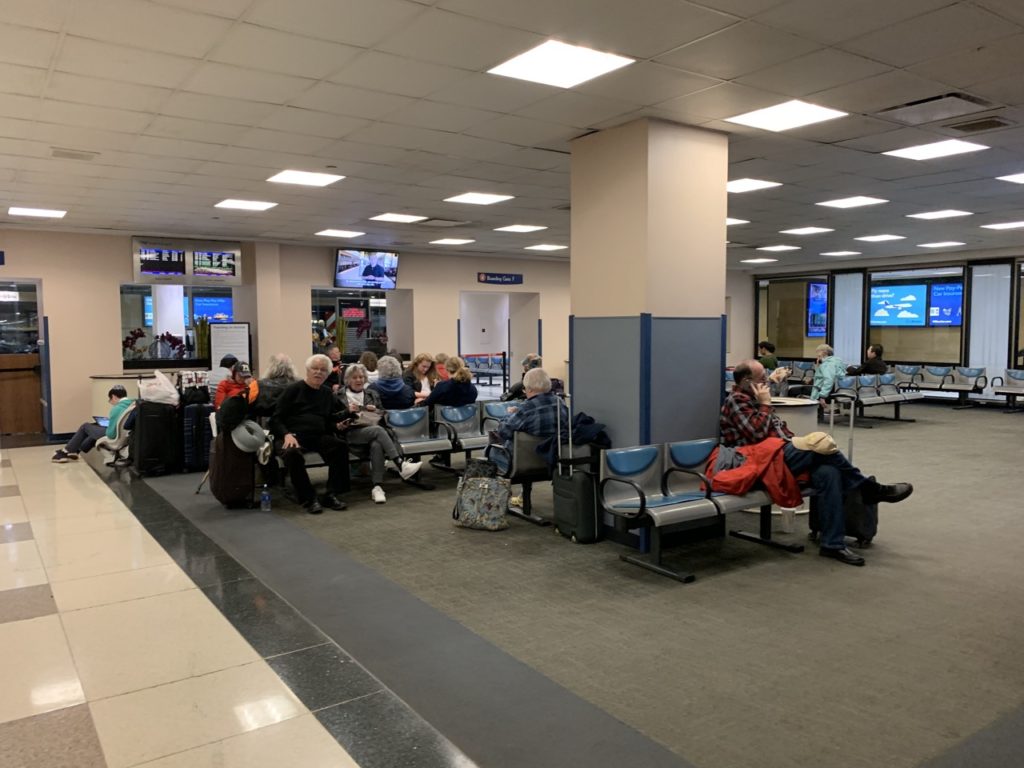
Boarding and Our Horizon Fleet Car
Boarding commenced right at about 5PM for our 5:15PM train, and our queue was directed right onto the train. In the past, we’ve had ticket check occur before boarding the train, but that didn’t happen this time.
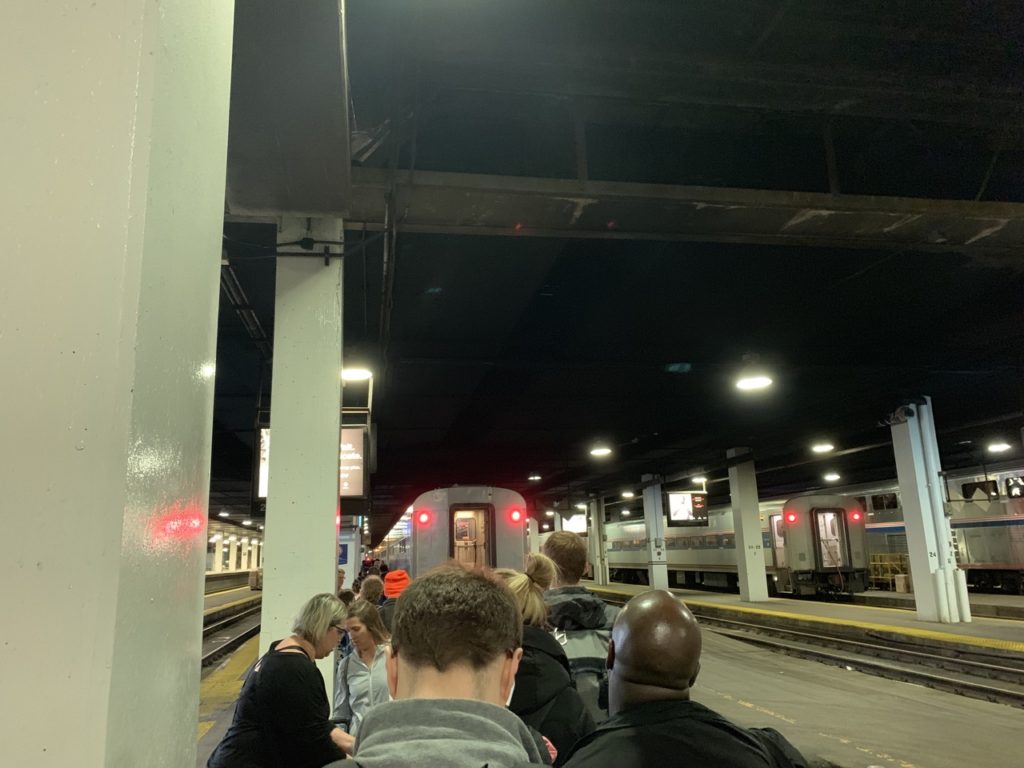
Heading to Springfield, we were sent nearly to the end of the platform. We had our choice between an older Amfleet car and a “newer” Horizon Fleet car and chose the Horizon.
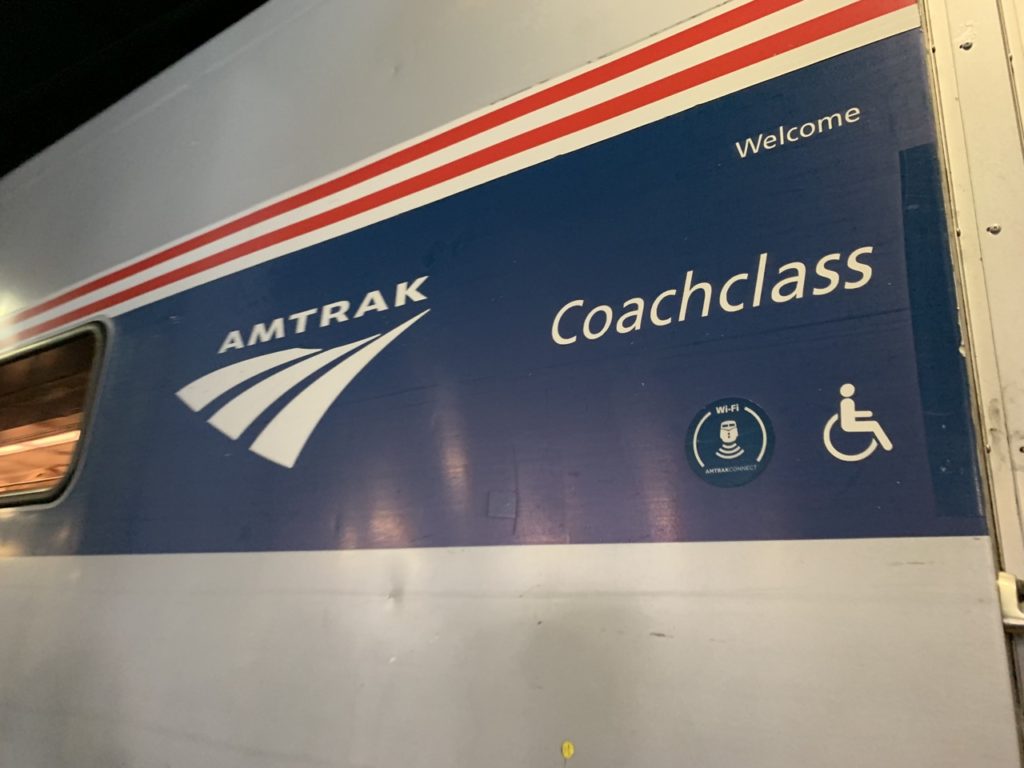
Unfortunately this was a full train and there were no more double seats left, so we were split between two aisle seats.
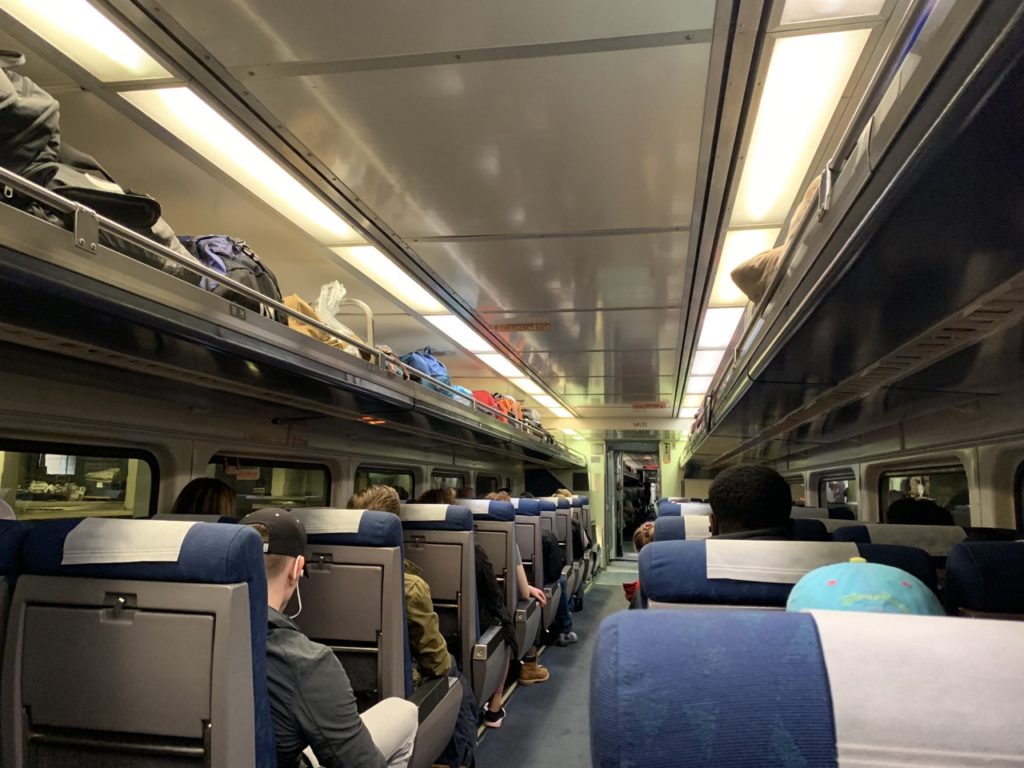
The only inconvenience of this is that the outlets are on the window side, so we would need to awkwardly ask permission if we needed to charge anything.
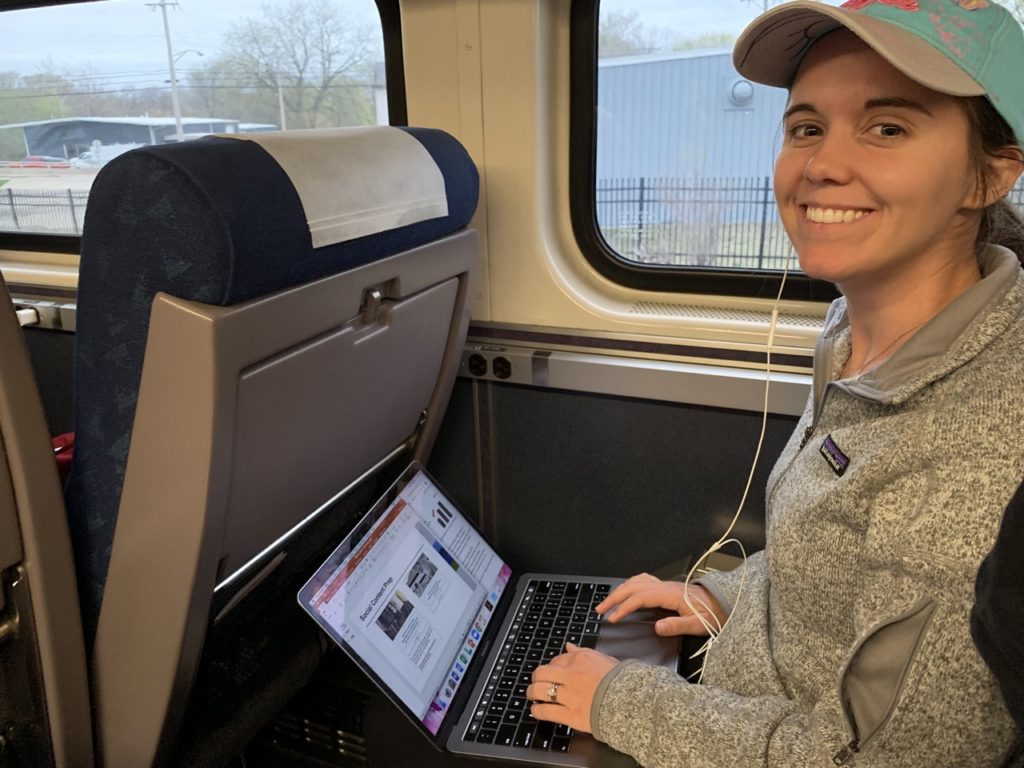
I’ve never had any issue with the seats on this route. At 5’7″ I find the seats sufficiently spacious. They aren’t the definition of comfort, but I’d be fine in them for anything but an overnight trip. The tray tables are a good size and comfortably fit my Macbook.
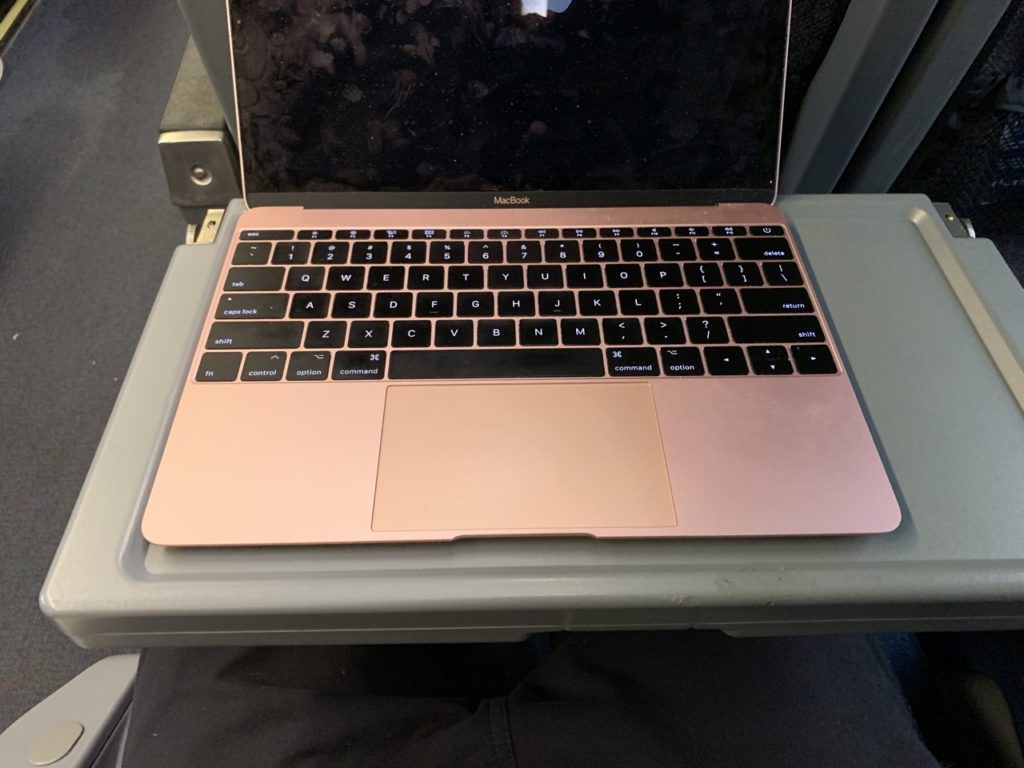
I switched seats mid-trip and my new tray table was defective (a common problem on these cars, actually) and didn’t come all the way down. This led to awkwardly cramped writing with my laptop on top of my lap.
Every seat has a reading light.
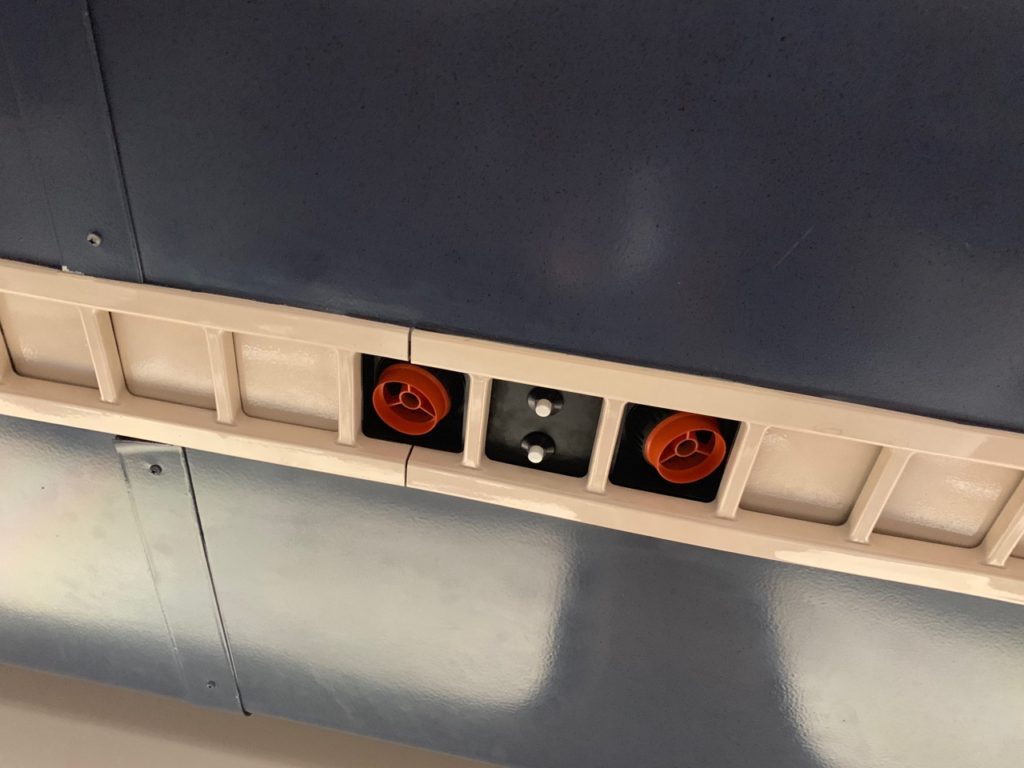
And as I said, the window side has outlets. They’re horizontally oriented and don’t have any sort of support, so I wouldn’t be surprised to see some chargers struggle with them. Our large, 61W Macbook Pro charger did fine for a short bit, though.
Wifi is available along the route, but I would never count on it working. I used my phone’s hotspot basically the entire trip, and even that has trouble getting signal in the more rural areas.
The Journey from Chicago to Springfield
We departed on time at 5:15PM. Several announcements we made, reminding us that this was a full train and a family service (so use headphones and don’t watch pornography, I guess).
Tickets were checked pretty much immediately. Having our party split across two rows caused a bit of confusion, especially when we moved together later. The staff spent much of their time reprimanding individual passengers for taking up two seats.
Having gone to college in central Illinois and having in-laws in southern Illinois, I’ll say that the journey from Chicago to southern Illinois is one of the most boring routes you can undertake in the country. Maybe one day I’ll take a great picture of a cornfield and share it here, but for now you’ll just have to take me at my word.
Mid-trip I swung by the Cafe Car (located at the rear of the train).
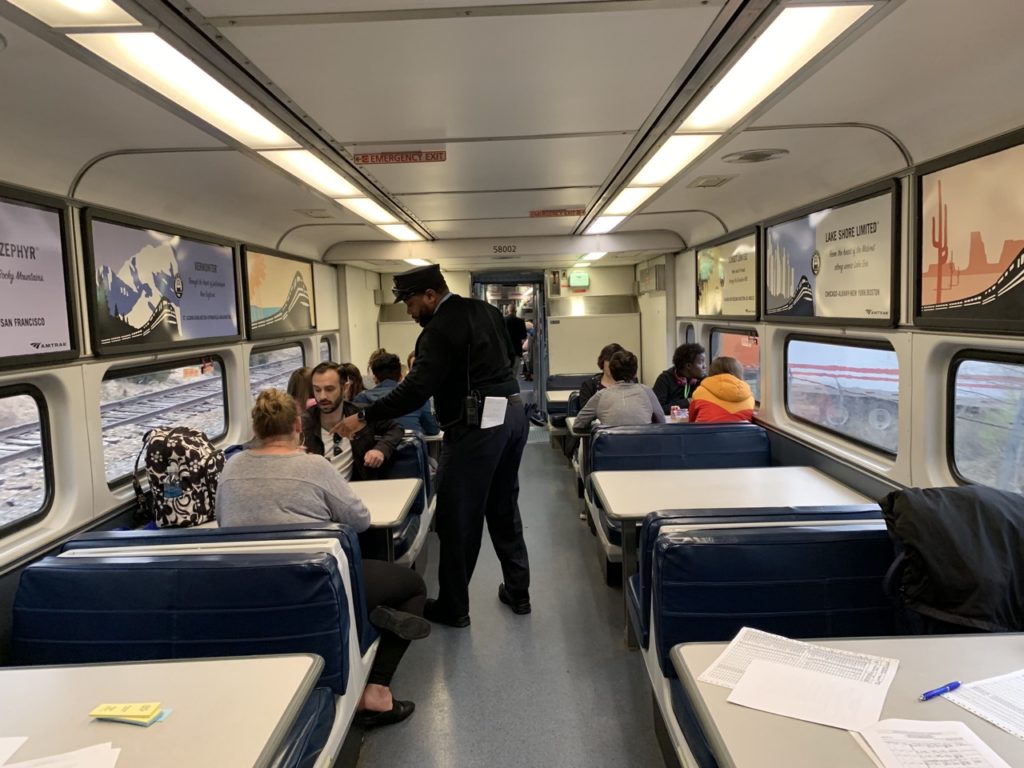
There had been an announcement asking that we not use laptops or lounge unnecessarily in the Cafe Car because it was a full train.
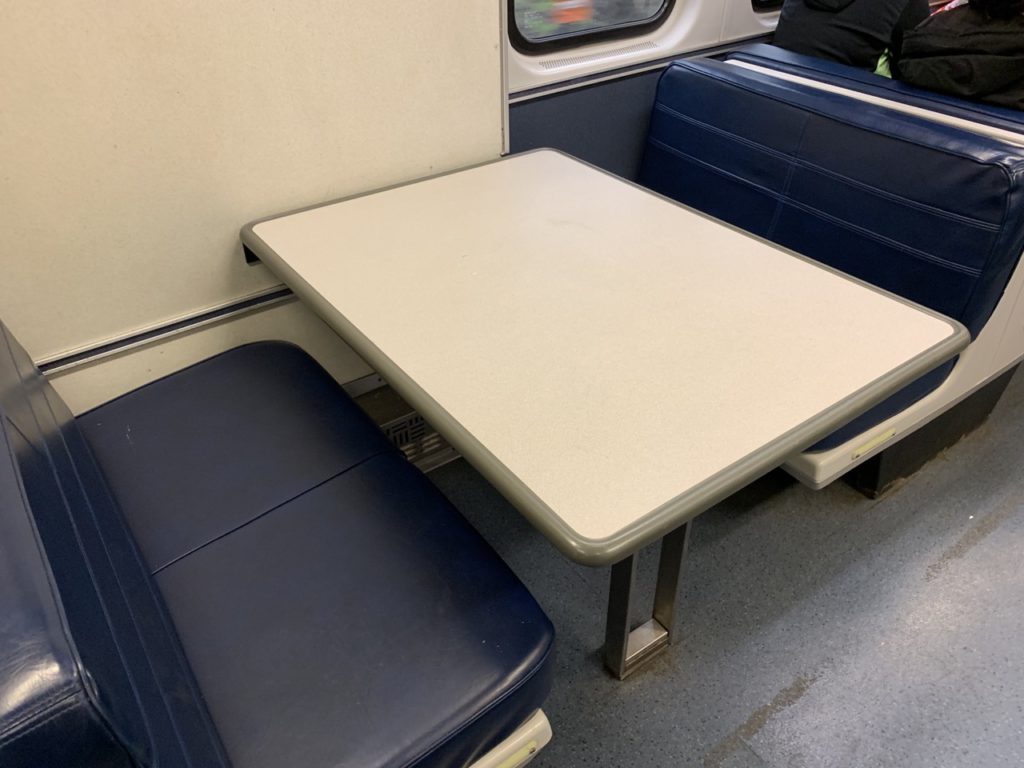
My menu board photo came out blurry, but clear enough for me to quickly highlight some prices:
- Boneless Buffalo Chicken Bites – $5.50
- DiGiorno Pizza – $9.75
- Vegan Burger – $7.25
- Sabra Hummus and Pretzels – $4.50
- Liquor – $7.25
- Domestic Beer – $5.50
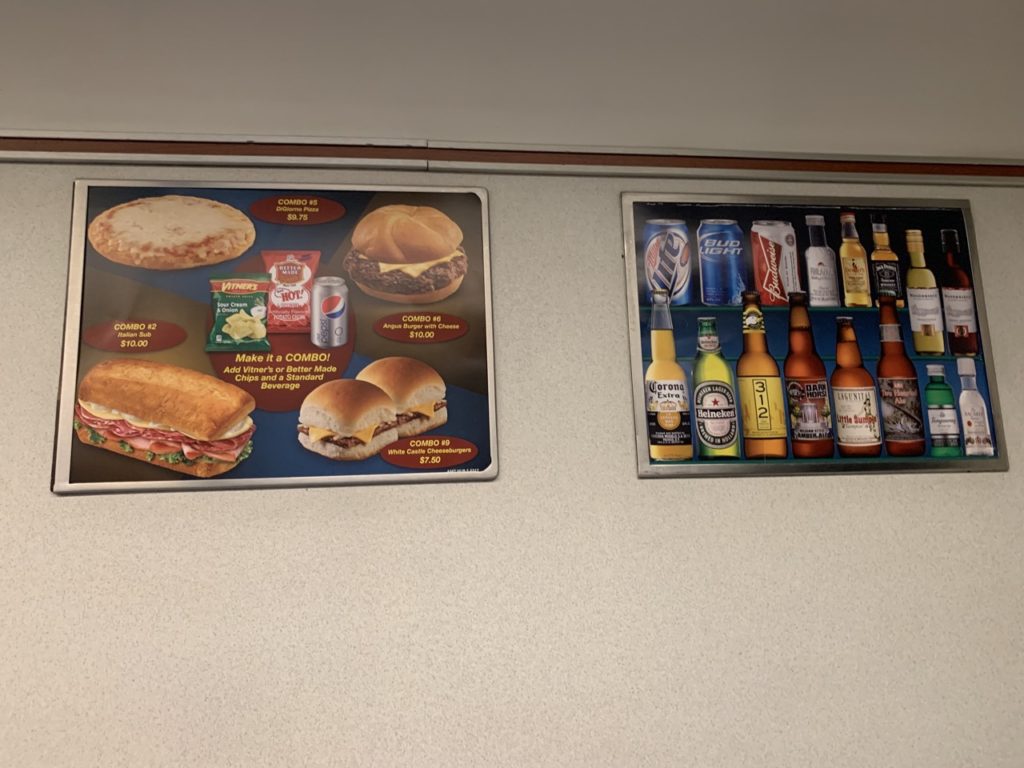
I didn’t feel the need to eat anything, as I assume we’re all on the same page about the cost-benefit analysis that goes into deciding whether or not to eat train food.
Each car has a restroom. There’s nothing special about them, and they have the same unsightly puddles on their floor that most train restrooms have. They are equipped with outlets. I was happy to see hand sanitizer prominently offered outside the restroom, and even happier that the dispenser worked.
We don’t ride this route frequently enough to be real authorities on its timeliness. There were times years ago when the journey was delayed by as much as an hour, but we haven’t had similar experiences recently. For this particular trip, we arrived in Springfield on time at about 8:37PM (scheduled 8:39PM).
Onward Options
We haven’t taken the full journey to St. Louis yet, but the total journey is schedule for 5 hours and 30 minutes. If you take the Lincoln Service 301 or 303 earlier in the day, you can combine them with the Missouri River Runner 313 and head all the way to Kansas City, Missouri. The combination Lincoln Service 303 and Missouri River Runner 313 takes 12 hours and 15 minutes between Chicago and Kansas City, Missouri.
Via the Texas Eagle, you can continue into Texas and, on certain days, further onward to Los Angeles, California.
Looking for more Amtrak reviews?
We also cover our experience on Amtrak on a few East Coast routes.
